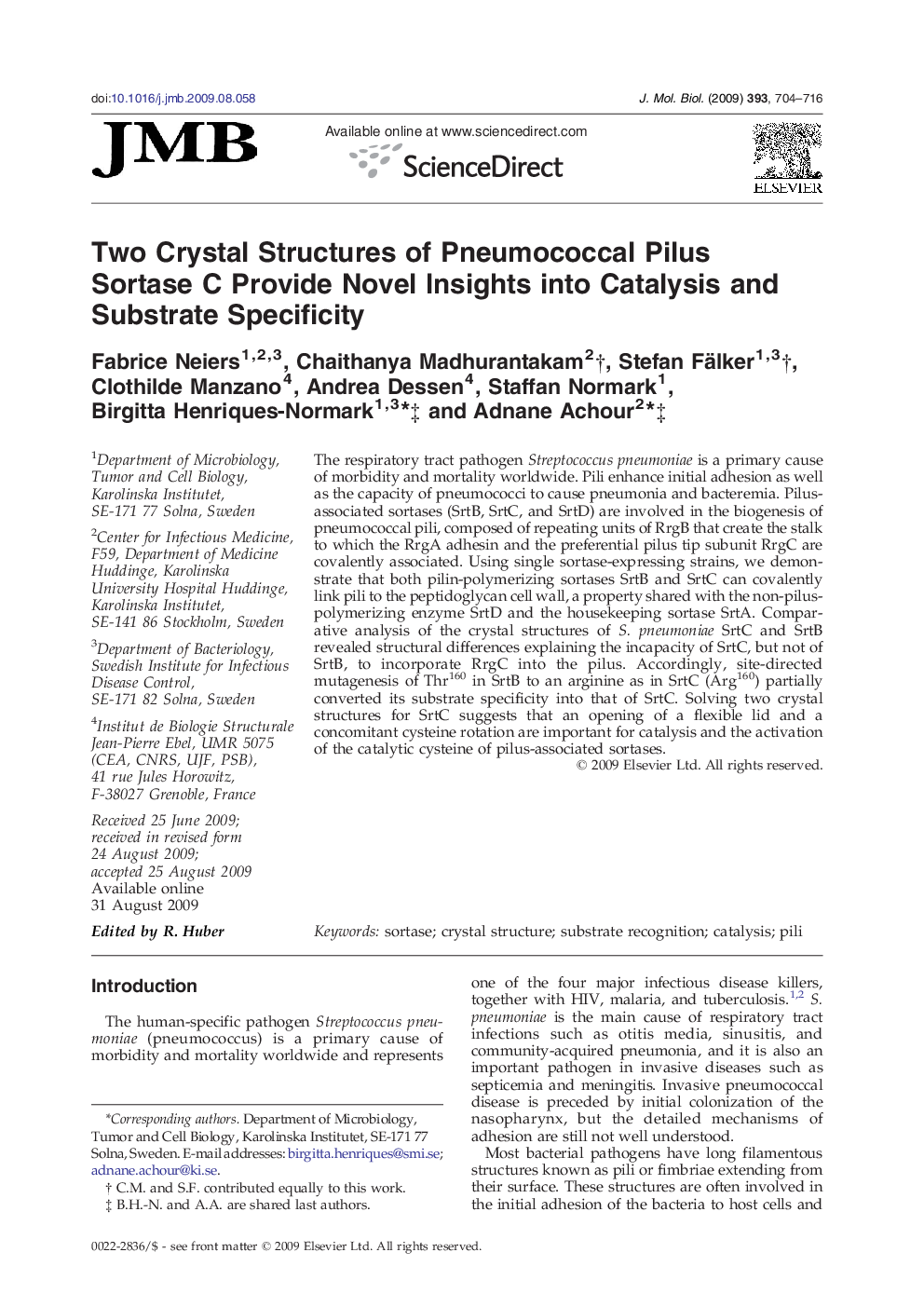| Article ID | Journal | Published Year | Pages | File Type |
|---|---|---|---|---|
| 2186181 | Journal of Molecular Biology | 2009 | 13 Pages |
The respiratory tract pathogen Streptococcus pneumoniae is a primary cause of morbidity and mortality worldwide. Pili enhance initial adhesion as well as the capacity of pneumococci to cause pneumonia and bacteremia. Pilus-associated sortases (SrtB, SrtC, and SrtD) are involved in the biogenesis of pneumococcal pili, composed of repeating units of RrgB that create the stalk to which the RrgA adhesin and the preferential pilus tip subunit RrgC are covalently associated. Using single sortase-expressing strains, we demonstrate that both pilin-polymerizing sortases SrtB and SrtC can covalently link pili to the peptidoglycan cell wall, a property shared with the non-pilus-polymerizing enzyme SrtD and the housekeeping sortase SrtA. Comparative analysis of the crystal structures of S. pneumoniae SrtC and SrtB revealed structural differences explaining the incapacity of SrtC, but not of SrtB, to incorporate RrgC into the pilus. Accordingly, site-directed mutagenesis of Thr160 in SrtB to an arginine as in SrtC (Arg160) partially converted its substrate specificity into that of SrtC. Solving two crystal structures for SrtC suggests that an opening of a flexible lid and a concomitant cysteine rotation are important for catalysis and the activation of the catalytic cysteine of pilus-associated sortases.
